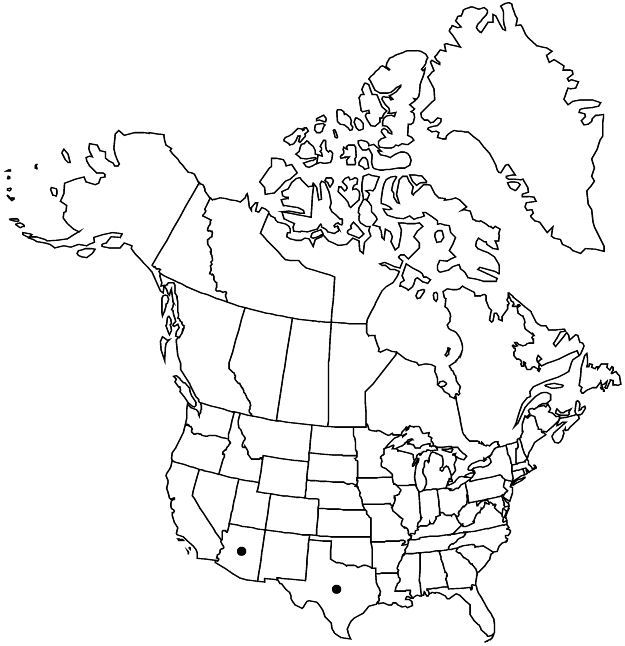Anoda crenatiflora
Nov. Pl. Descr. Dec. 8: 96. 1798.
Herbs, to 1 m. Stems erect, stellate-hairy, hairs 0.1–0.3 mm. Leaves: petiole subequal to blade proximally, shorter distally, with stellate hairs 0.1–0.3 mm; blade concolorous, ovate to hastate, narrowly so upward, 3–9 cm, membranous, base truncate, margins coarsely crenate-dentate, apex acute, surfaces minutely and obscurely stellate-hairy, hairs simple, bifurcate adaxially. Inflorescences racemes or panicles. Pedicels 2–7 cm. Flowers: calyx 3–7 mm, accrescent to 6–8 mm, lobes without dark midrib, apex acute, densely tomentose; petals pale-yellow, not fading reddish, 6–8 mm, ciliate on claw; staminal column glabrous or with few apical hairs; style 10–13-branched; stigmas glabrous. Schizocarps 7–9 mm diam., densely hairy; mericarps 10–13, with dorsal spur 1–2 mm. Seeds enclosed in endocarp. 2n = 60.
Phenology: Flowering fall.
Habitat: Dry, open shrublands, deciduous forests
Elevation: 800–2300 m
Distribution

Ariz., Tex., Mexico (Chihuahua), Mexico (Coahuila)
Discussion
Anoda crenatiflora is known from five counties in Texas, primarily in the Big Bend region and Cameron County. In Arizona it has been reported only from Santa Cruz County.
Selected References
None.